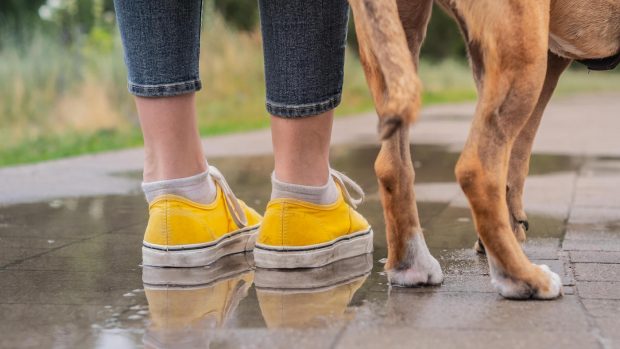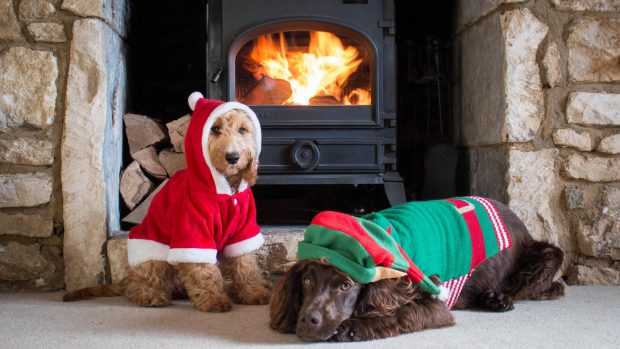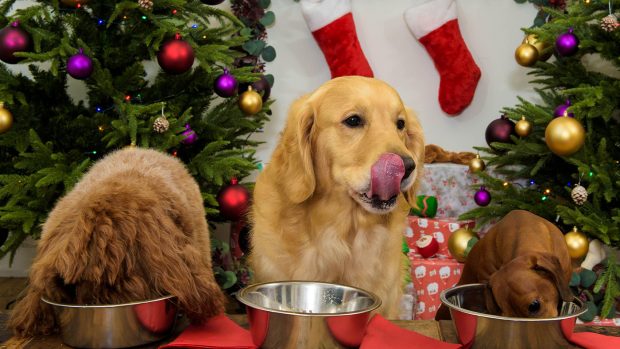Like humans, dogs have two sets of teeth in their lifetime – “baby teeth” and adult teeth. When a human baby is teething, all you want to do is relieve their pain. While puppies don’t make as much noise as a teething baby, if they’re chewing your house to shreds, you’ll want to know how to help a teething puppy.
A dog’s primary means of touching is with his mouth – and certain breeds can be mouthier than others, such as bull breeds and retrievers. Puppies will chew on people, furniture and objects within reach – this is how they learn about the world around them, and they’re not concerned whether the object is valuable to you. But chewing is prevalent especially while they’re teething, as it’s assumed to alleviate the discomfort that comes with it.
When do puppies get their deciduous teeth?
Your puppy will grow his first set of teeth, called primary or deciduous (meaning they will fall out), from around three weeks of age. They have 28 deciduous teeth, which are usually all present by six weeks of age.
When do dogs get their adult teeth?
Puppies end up with 42 permanent adult teeth. The deciduous teeth will usually begin to fall out at around 12 weeks, and most will have fallen out by six months – at this point most permanent teeth will have have erupted, too.
Often you can find puppy teeth on the floor, particularly if your puppy has been chewing or playing with another dog. Most of the time, teeth are swallowed while eating, and this isn’t something to worry about. It’s not unusual for blood to be present when the teeth fall out, but it’s a minuscule amount.
How do I know if my puppy is teething?
Quite simply, they will bite anything! Your pup will be after your hands, legs, feet and anything else they can get their mouth on. Excessive chewing behaviour seems to abate at 18 months but will continue to some degree. Chewing, licking and mouthing are normal dog behaviours and are a way of exploring and learning to carry objects around.
What toys and chews can help a teething puppy?
Finding the best teething toys for puppies can be a bit of a minefield. Dogs tend to chew nearly everything – and nearly everything has been found to be dangerous and cause problems at some point.
I would avoid rawhides as they can block the gut if ingested, while most other chews, including pigs’ ears, bull pizzle, bones, synthetic toys and tennis balls, have been associated with something negative at some point in time – usually bits chewed off causing asphyxia or blockages. However, millions of dogs have been chewing millions of objects for years without incident, so while the risk is low, common sense should prevail and, wherever possible, you should supervise your puppy when he’s chewing.
Some veterinary dentists think that dogs shouldn’t chew anything solid, such as deer antlers, Nylabones and stuffed bones. I feel long-lasting dog chews can also be managed with common sense and due diligence from the owner. I often put carrots in the fridge and let my pups’ teeth on those as they are digestible, good for them and the cold soothes the gums. But you can get chew toys to put in the fridge for this purpose, too.

Nylabone Chill & Chew | Amazon.co.uk
Made with soft, durable material designed specifically for teething puppies, this flavoured chew bone changes colour when it’s frozen and ready. It also has tiny bristles that act like a mini toothbrush to help keep teeth clean.

Nylabone Teething Toy | Amazon.co.uk
Soak and freeze the whole bone and cloth of this interactive dog toy for a cool texture with added teething relief. It is flavoured and the flavour won’t wear off.

Squeaky Starfish | Amazon.co.uk
Made of natural rubber, which is durable and won’t break or split, this teeth cleaning toy is suitable for smaller and puppies. It can be used to massage your dog’s gums, too.
How do I know if something is wrong?
Problems with deciduous teeth are rare. The smaller dog breeds or the brachycephalic (short-nosed) breeds can have a tendency to retain some of the deciduous teeth. The most usual place is the upper canine teeth, but it can happen anywhere. Keep an eye on this as if it’s left too long it can cause malocclusion, which is a misalignment of teeth that leads to a poor bite – and this can cause discomfort.
In this instance, the deciduous teeth need to be removed as they can cause future problems too with food becoming trapped, leading to gingivitis and periodontal disease. You should also make sure that the socket that the tooth has come out of is empty and there is no retained tooth material left in there as this too can be incredibly painful – although this is also rare.
How to help a teething puppy in the long run
In order to stop your dog chewing, do not reward any undesirable behaviour – and don’t let others reward it either, even if it’s unintentional. Chewing on hands and feet needs to be corrected and redirected in accordance with your dog’s personality, breed and traits. Include lots of training, puzzle toys and don’t make a scene if your pup steals something that they shouldn’t.
Find something that they can have instead of what they’re chewing and offer a trade. The more you react, run or chase, the more the puppy learns this behaviour gets your attention and it becomes a game. Make sure you rotate teething toys and chews often so that they do not become bored. You can use one of the best anti-chew sprays on doors and furniture that you want to protect, too.
Teeth brushing
Getting your dog used to having something in his mouth other than food or a chew toy is a good idea, too – here’s how to clean a dog’ teeth. You also need to be able to retrieve items from your dogs mouth. Get your hands on one of the best toothbrushes for dogs and toothpastes suitable for dogs.
Introduce them gently and let your puppy lick and sniff the brush. Do not force it – take your time and have patience until you gain acceptance – and avoid brushing too hard, particularly on the gum line.
You might also like:

Best teething toys for puppies to stop inappropriate chewing and relieve gums

How to stop your dog chewing your home to shreds

Teeth off! The best sprays to stop dogs chewing

Why you should brush your dog’s teeth – and how to do it

How to stop a puppy crying so that everyone gets a good night’s sleep

Subscribe to Horse & Hound magazine today – and enjoy unlimited website access all year round
Horse & Hound magazine, out every Thursday, is packed with all the latest news and reports, as well as interviews, specials, nostalgia, vet and training advice. Find how you can enjoy the magazine delivered to your door every week, plus options to upgrade your subscription to access our online service that brings you breaking news and reports as well as other benefits.




